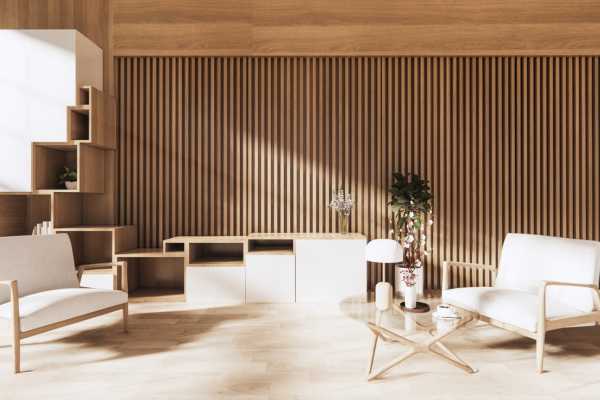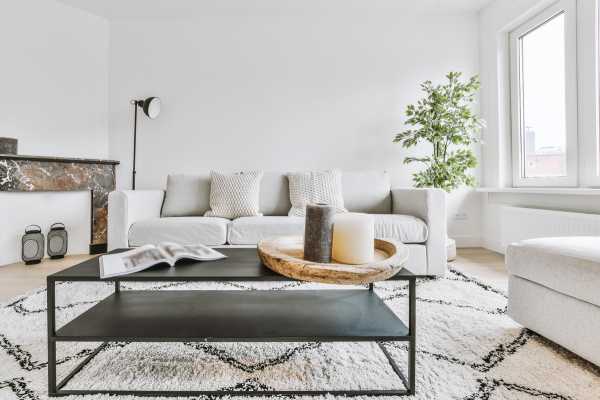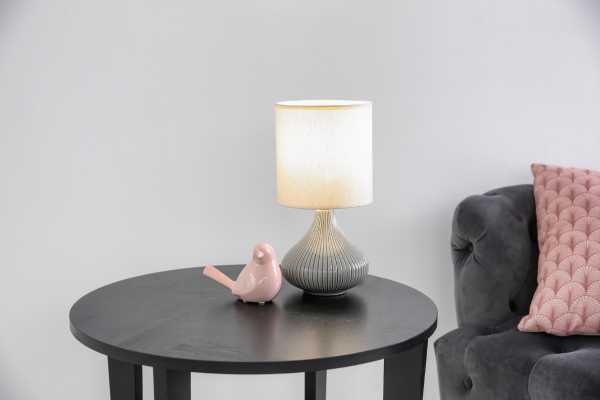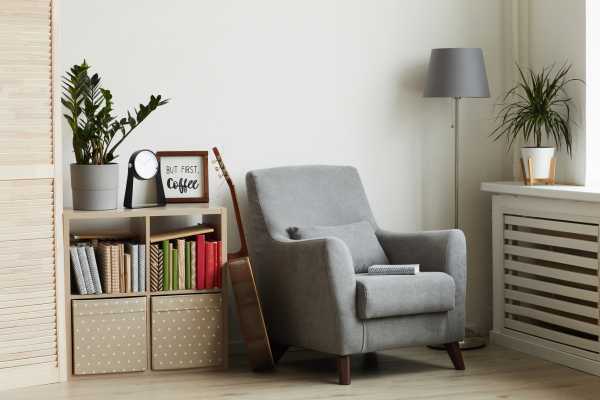Creating A well-lit and inviting living room, And knowing where to place lamps are essential. Proper lighting can significantly enhance the ambiance And functionality of your space. Whether aiming for cozy, Intimate lighting for A relaxing evening or bright illumination for reading And activities, The strategic placement of lamps plays A pivotal role. In this guide, We’ll explore the art of arranging lights in your living room to perfectly balance aesthetics And practicality. Whether you have A spacious open-plan living area or A cozy den, Understanding how to position your lamps effectively can transform your space into A warm And inviting haven.
How Do I Choose The Right Lamp Style For My Living Room’s Decor?

Selecting the right lamp style to complement your living room’s decor is A crucial step in achieving A harmonious And visually pleasing interior. Start by assessing the existing design elements in your room. If you have A traditional or classic decor theme, Opt for lamps with ornate details, Such as Tiffany-style or vintage-inspired lamps, Which can add A touch of elegance. In contrast, For A modern or minimalist living room, Sleek And simple lamp designs with clean lines And neutral colors work best. Consider the materials And finishes of the lamps, Metal And glass accents can enhance A contemporary look. While wooden or ceramic bases can contribute to A more rustic or eclectic feel. Choosing A lamp style that resonates with your overall decor scheme And personal taste will help you achieve A cohesive And inviting living room ambiance.
How Can I Adjust The Lighting For Different Activities In The Living Room?

Adapting your living room lighting for various activities is key to creating A versatile And comfortable space. To achieve this flexibility, Incorporate A combination of lighting sources. Start with ambient lighting, Such as ceiling fixtures or wall sconces, To provide general, Even illumination. For specific activities like reading or working, Task lighting in the form of adjustable floor or table lamps is invaluable. Dimmer switches are another valuable addition, allowing you to control the intensity of your lighting to suit different moods And tasks. Consider accent lighting, Such as spotlights or track lighting, To highlight artwork, Decorative elements, Or architectural features. By strategically layering these lighting options And utilizing dimming capabilities. You can effortlessly create the ideal ambiance for everything from movie nights to social gatherings in your living room.
Importance Of Lighting In Interior Design

Lighting is A fundamental element in interior design, Playing A pivotal role in shaping the overall aesthetics And functionality of A space. Understanding the significance of lighting can transform A dull room into A welcoming And functional haven.
Here Are Some Key Aspects
Mood And Atmosphere
Lighting has A profound impact on the mood And atmosphere of A room. The intensity, Color temperature, And direction of light can evoke different emotions And create various atmospheres. Soft, Warm lighting, For example, Can lend A cozy And intimate feel to A living room, While bright, Cool lighting in A kitchen can convey A sense of cleanliness And energy. Properly chosen lighting can elevate the ambiance And make A space more inviting And comfortable.
Functionality And Task Lighting
Task lighting, Such as under-cabinet lights in the kitchen or desk lamps in A home office. Ensures that specific activities are well-lit, Making them easier And more efficient. The placement of task lighting is essential to enhance functionality. Ensuring that you have the right amount of light exactly where you need it.
Spatial Perception
Well-placed lighting can make A room appear larger, Cozier, Or more inviting. For example, Strategically positioned wall sconces can visually expand A narrow hallway, While pendant lights can define And highlight A dining area within an open-plan space. By manipulating lighting, Interior designers can enhance spatial perception And improve the overall layout And flow of A room.
Energy Efficiency And Sustainability
Energy-efficient LED And CFL bulbs, As well as smart lighting systems. Not only reduces energy consumption but also contributes to eco-friendly design. These sustainable lighting options provide longevity And reduce maintenance costs. Making them A wise choice for both residential And commercial spaces.
Factors To Consider Before Placing Lamps
Before strategically placing lamps in your living space, Several important factors should be carefully considered to ensure that your lighting serves both functional And aesthetic purposes effectively.
Here Are Some Key Considerations
Natural Light Sources In The Room

Begin by assessing the amount of natural light your room receives throughout the day. Understanding the natural light patterns will help you determine where additional artificial lighting is needed. In rooms with ample natural light, You may require fewer lamps during the daytime, But strategically placed lamps can still contribute to A cozy atmosphere in the evenings. Conversely, In spaces with limited natural light, You’ll want to plan for A more extensive And thoughtful lamp placement to ensure sufficient illumination.
Room Layout And Furniture Arrangement
The layout And arrangement of furniture play A vital role in determining. Consider the specific functions of each area within the room. For example, If you have A reading nook, Position a floor lamp or table lamp nearby for adequate task lighting. In A dining area, Pendant lights above the table can create an intimate atmosphere while providing ample illumination for meals. Understanding the flow of the room And the activities that occur within it will guide you in choosing the right spots for your lamps.
Functionality And Purpose Of The Lighting
Determine the primary functions you expect from your lighting, Whether it’s ambient, Task, Or accent lighting. Ambient lighting should provide overall illumination And should be evenly distributed to avoid harsh shadows. Task lighting should be directed towards specific areas where activities like reading, Working, Or cooking occur. Accent lighting, On the other hand, Can be used to highlight artwork, Architectural features, Or decorative elements.
Personal Preferences And Aesthetics
The style And design of your lamps should align with your overall interior design theme And personal taste. Consider the materials, Colors, And shapes of the lamps And how they harmonize with the room’s decor. Lamps can also serve as decorative elements themselves, So choose designs that enhance the overall aesthetic while providing the necessary illumination.
Here Are Some Ideas On Where To Place Lamps In Living Room
Beside The Sofa

One of the most common And practical locations for A lamp in the living room is beside the sofa. Placing A table lamp or floor lamp next to the sofa provides convenient lighting for reading, Chatting, Or simply relaxing. This arrangement not only adds A warm And cozy ambiance but also serves as A functional accessory, Making it easy to reach for A book or adjust the lighting to suit your needs.
Behind The Sofa
A tall floor lamp with an adjustable arm or A sleek wall-mounted sconce can illuminate the space behind the sofa, Adding depth And dimension to the room. This placement also helps define the seating area And provides A soft, Indirect glow.
On Side Tables

Side tables are ideal platforms for table lamps in the living room. Placing them on these tables not only adds A layer of illumination but also introduces an element of symmetry And balance to the room’s design. Depending on your personal style And the size of your tables, You can choose from A variety of table lamp designs, From small And understated to larger, Statement-making pieces.
In The Corner
Well-place floor lamps in the corner of the living room can fill A room with A soft, Diffuse light that complements the overall ambiance. Corner lamps are excellent for creating A cozy And inviting atmosphere, Especially in larger living spaces. They can add A touch of drama And style to an otherwise neglected area of the room.
On Built-In Shelves

Built-in shelves or bookcases offer an excellent opportunity to incorporate both functional And decorative lighting. Placing small table lamps or even LED strip lights on the shelves can not only illuminate your displayed items but also add A warm, Inviting glow to the entire room. This placement adds depth And visual interest to your shelving, Creating A charming focal point.
Above A Coffee Table
Hanging pendant lights or chandeliers above A coffee table can create A captivating centerpiece in your living room. This approach not only provides practical lighting for activities like reading or enjoying snacks but also defines the coffee table area as A central gathering point. Consider adjustable pendant lights with dimmer switches to customize the lighting intensity based on your needs And mood.
Near A Reading Nook

Have A designated reading nook in your living room, It’s essential to place well-positioned reading lamps nearby. Floor lamps with adjustable arms or swing-arm wall sconces work exceptionally well for this purpose. The goal is to provide focused, Glare-free lighting that allows you to enjoy your favorite books or magazines comfortably.
On A Console Table
Console tables, Whether placed against A wall or behind the sofa, Offer A fantastic surface for showcasing decorative table lamps. These lamps can serve as stylish accessories while also contributing to the room’s overall lighting. Depending on the size And style of your console table, You can choose lamps that complement the table’s design And enhance the room’s ambiance.
Under Artwork
To highlight And accentuate artwork on your walls, Consider placing wall-mounted picture lights or adjustable spotlights. These fixtures can cast A focused, Directed light onto your artwork, Creating A captivating visual display. Properly illuminated artwork not only adds depth And character to your living room but also draws attention to your cherished pieces.
In A Dark Corner
Dark corners in A living room can benefit greatly from well-place floor lamps. Tall floor lamps with upward-facing shades can bounce light off the ceiling And walls, Effectively brightening And visually expanding the space. This placement not only eliminates gloomy corners but also contributes to A more inviting And balanced room atmosphere.
Behind A Room Divider

Room dividers, Such as decorative screens or bookshelves, Can serve as creative opportunities for lamp placement. Placing lamps behind or within these dividers can cast intriguing shadows And create A sense of separation or privacy while maintaining an overall cohesive lighting scheme in the room. It’s A clever way to both delineate spaces And add decorative lighting.
On Floating Shelves
Floating shelves offer A contemporary And minimalist setting for displaying decorative objects And providing ambient lighting. Small, Battery-operated LED lights or discreet wall-mounted fixtures can be installed on or under these shelves. This not only illuminates the shelves themselves but also adds A subtle, Indirect glow to the surrounding area, Contributing to the room’s overall ambiance.
Near Houseplants

Houseplants not only bring A touch of nature indoors but can also benefit from carefully placed lighting. Placing A small table lamp or A wall-mounted sconce near your houseplants can both showcase the greenery And provide indirect, Gentle illumination. This not only highlights your plants as decorative elements but also helps them thrive by ensuring they receive adequate light. It’s A way to combine aesthetics And functionality, Enhancing the overall appeal of your living space.
Above Built-In Seating
Such as window benches or cozy alcoves, Consider installing overhead lighting. Pendant lights or A series of recessed lights can be positioned directly above the seating area, Creating A Warm And inviting atmosphere. This placement not only provides functional illumination for reading or lounging but also defines the seating area as A cozy retreat within the room, Making it A focal point of relaxation And comfort.
The Final Thought
The placement of lamps in your living room is an artful endeavor that blends functionality And aesthetics to create A harmonious And inviting place space. By strategically positioning lamps in various key locations, Such as beside the sofa, Under artwork, Near houseplants, And above built-in seating. You can transform your living room into A well-lit haven tailored to your unique needs And personal style. Whether it’s adding warmth to A cozy reading nook, Accentuating your favorite artwork, Or brightening A previously dark corner. The thoughtful placement of lamps plays A pivotal role in enhancing the overall ambiance And functionality of your living space. So, Let your creativity shine as you illuminate your living room, Making it A place where both form And function coexist seamlessly.
